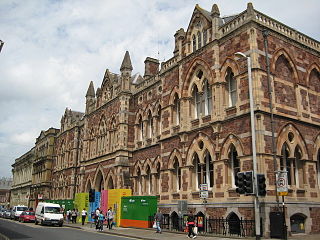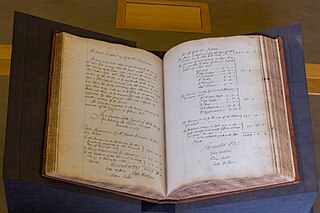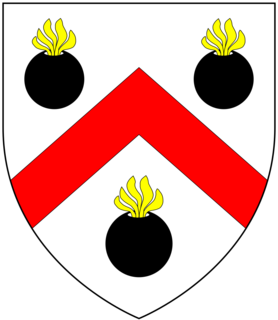
Exmouth is a port town, civil parish and seaside resort, sited on the east bank of the mouth of the River Exe and 11 miles (18 km) southeast of Exeter.

Tiverton is a town and civil parish in the county of Devon in England and is the main commercial and administrative centre of the Mid Devon district. The estimated population of the town in 2019 was 20,587. The total area of the two County Council Divisions had a population of 38,191 in 2019.

Ashcombe is a village and civil parish in the Teignbridge district of Devon, England, about eight miles south of the city of Exeter. The parish is surrounded clockwise from the north by the parishes of Kenton, Mamhead, Dawlish, Bishopsteignton and Chudleigh. In 2001 its population was 77, down from 125 in 1901.

Bickleigh is a village and civil parish in the Mid Devon district of Devon, England, about four miles south of Tiverton. It is in the former hundred of Hayridge. According to the 2001 census it had a population of 239.

Cove is a small village in the county of Devon, England. It is 4 miles north of Tiverton and 2 miles from Bampton in the Exe Valley some 450 feet above sea level. Cove was formed into an ecclesiastical parish in 1886. The church of St. John the Baptist, erected in 1856 on the site of an earlier building, is a stone building in the plain Gothic style consisting of chancel, nave and vestry. Services ceased in 1987 and the building and former churchyard are now a private residence. The register dates from the years 1680 to 1987. The Exe Valley Railway used to run through the village and you can still see the platform and old station house which is currently lived in.

St Thomas is an area of Exeter and formerly a 3,700-acre (15 km2) civil parish and registration district in Devon, England, on the western side of the River Exe, connected to Exeter by Exe Bridge. It has a number of pubs, places of worship, several schools and a large shopping precinct. The population, according to the 2001 census, is 6,246, increasing to 6,455 at the 2011 Census.

East Allington is a village and civil parish in the South Hams district of Devon, England, three miles (5 km) south of Halwell and just off the A381 road. It lies about three miles (5 km) from Kingsbridge and about ten miles (16 km) from Totnes. The coast at Slapton Sands is about five miles (8 km) to the south-east. Also in the parish is the hamlet of The Mounts, about one mile (1.6 km) away.
Sandford is a village and civil parish in the District of Mid Devon within Devon, England. Sandford is part of the electoral ward named Sandford and Creedy. The ward population at the 2011 Census was 3,429.
There have been three baronetcies created for persons with the surname Newman, one in the Baronetage of England and two in the Baronetage of the United Kingdom. Two of the creations are extant as of 2007.
William Charles Plenderleath was an English Anglican clergyman, author and antiquarian, best remembered for his White Horses of the West of England.

Doddiscombsleigh is a small settlement in Devon, England. It is 5 miles (8 km) southwest of the city of Exeter and one mile East of the River Teign and the Teign Valley.
Sir William Cooke of Highnam Court in Gloucestershire, was an English landowner and politician who sat in the House of Commons at various times between 1597 and 1614.

Nether Exe or Netherexe is a very small village and civil parish in Devon, England. It lies near the River Exe, as its name suggests, about 5 miles (8 km) north of Exeter.

John Hayward (1807–1891) was a Gothic Revival architect based in Exeter, Devon, who gained the reputation as "the senior architect in the west of England".

Peter Ball or Balle, M.D., was an English physician.

Sir Peter Ball was an English lawyer and politician who sat in the House of Commons between 1626 and 1640. He was attorney general to Queen Henrietta Maria.

Lupton is an historic manor in the parish of Brixham, Devon. The surviving manor house known as Lupton House, is a Palladian Country house built by Charles II Hayne (1747–1821), Sheriff of Devon in 1772 and Colonel of the North Devon Militia. It received a Grade II* listing in 1949. The park and gardens are Grade II* listed in the National Register of Historic Parks and Gardens.

Mohuns Ottery or Mohun's Ottery, is a house and historic manor in the parish of Luppitt, 1 mile south-east of the village of Luppitt and 4 miles north-east of Honiton in east Devon, England. From the 14th to the 16th centuries it was a seat of the Carew family. Several manorial court rolls survive at the Somerset Heritage Centre, Taunton, Somerset.
Collacombe is an historic manor in the parish of Lamerton, Devon, England. The manor house survives as a grade I listed building, known as Collacombe Barton or Collacombe Manor (House).

Mamhead House, Mamhead, Devon, is a country house dating from 1827. Its origins are older but the present building was constructed for Robert William Newman, an Exeter merchant, in 1827–1833 by Anthony Salvin. The house is Grade I listed. The parkland has its own Grade II* listing. It was for a time known as Dawlish College.

















